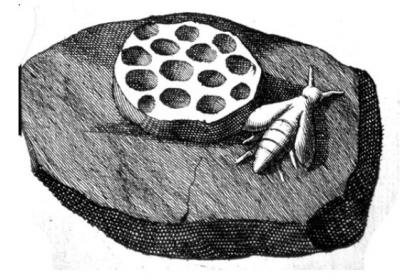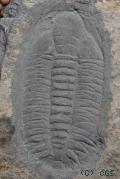Fakes of fossils
Faking fossils is not a new business. Repairing, restoring, adding to or plain faking of fossils is almost as old as the fossil trade itself. The problem being, as with most areas of collecting, that money can be made and sometimes has to be made due to lack of other options and wide-spread poverty.
The famous 19th century trilobitologist BARRANDE, employed former quarry workers that where called “stone mens” to search the areas near Prague for trilobite specimens. Particularly interesting finds resulted in good money and some of those “stone mens” could not help but fail their employer and produce false trilobites in order to get more money for them. With the beginning of the trilobite trade at the end of the 19th century, many of these faked specimens found their way even into the collections of great museums around Europe where they are on display even today as refreshing curiosities (Budil & Turek, 2003).
A favored way to fake trilobites was simply to assemble new specimens from parts, originating at times not only in different specimens but even in different genera, and thereby making the “trilobite” complete, resulting in higher prices when sold. Some of these “rare species”, which had been sold to museums and educational institutions, look quite grotesque in our time. There was, for example, a trilobite assembled from the cephalon of a Phacops, the pygidium being an Odontochile and the thorax consisting of merely 4 segments. (SNAJDR, 1992). However, at those times, the faked trilobites at least consisted of real parts. They were created in a “make-one-out-of-two”-manner but the parts were real. Fakes of this nature are created unto this very day, but the availability of resins made it possible to fake entire trilobites by simply casting them.
Following sensational finds of large and bizarre trilobites in the Moroccan desert near Alnif, Erfoud and Tabourikt over the last three decades, a whole trilobite industry evolved. This happened in an area where education was scarce and the availability of electricity and running water restricted. Native Moroccans and nomads found a welcomed (if not their only) income in searching for and preparing trilobites. Over the years, trilobites have become an important economical factor in the poverty-stricken areas of the High Atlas mountain range where the Moroccan trilobites are found.
According to Burkard & BODE (2003), there are well-known manufacturers in Morocco who produce fake trilobites or rather trilobite models. Fossil dealers who go to Morocco to buy trilobites are well aware of that and know that these trilobites are not real. Neither are these models sold to them as real trilobites but reproductions. The cheating does not start there, it starts when these reproductions are thrown onto the trilobite market in masses and sold as the real stuff for little money. Faking of this nature started in the 1980s due to increasing demand for giant Paradoxides and lack of the real thing. In the beginning, the old “make-one-out-of-many” was common, but very soon whole trilobites were faked. It is verified that it was not the Moroccans who started to fake trilobites but American as well as European dealers who inspired them to do so. The American and European dealers then sold the fake trilobites as the real thing. Meanwhile the faking has reached levels that include almost any known Moroccan trilobite species and it is possible that there is more false material floating around at this time than real!
Source: http://www.fossilmuseum.net/collect/faketrilobites3.htm http://www.extinctions.com/?fuseaction=home.fakefossils | ||
Virtual museum of the Czech Geological Survey, www.geology.cz, (C) Czech Geological Survey, 2011, v.0.99 [13.12.2011]


![[ENG]](img/vlajka-cr.gif) Česky
Česky 


